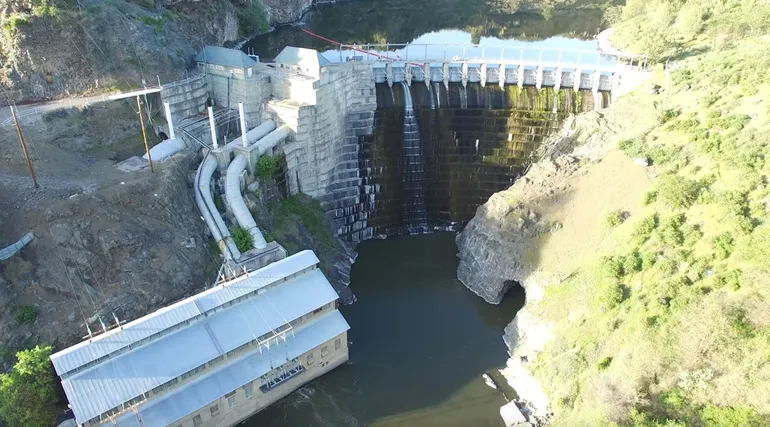Dive Brief:
- Construction crews breached the final two dams on a California section of the Klamath River on Aug. 28, The Associated Press reported, allowing water to flow and bringing the largest dam removal project in U.S. history close to completion.
- The $450 million effort entails taking out four hydroelectric dams on the Klamath River in Oregon and California in order to restore habitat and passage for migrating fish. Omaha, Nebraska-based Kiewit is the prime contractor while Knight Piésold, headquartered in South Africa, is the civil prime design partner on the project.
- The removal clears the way for salmon to swim freely through a major watershed near the California-Oregon border for the first time in more than a century, and allows Chinook salmon access to key habitat just in time for the fall spawning season, according to The Associated Press. Deconstruction work is expected to be complete later this fall.
Dive Insight:
Dam removal has gained momentum in the United States in the past 50 years, as the country increasingly acknowledges their negative environmental impact and general state of disrepair.
The Infrastructure Investment and Jobs Act adds $585 million into the High Hazard Potential Dams Grant Program — more than 18 times what the federal government gave out from 2019 to 2021, according to The Associated Press — with $75 million designated for dam removal. Last year, at least 18 dam removal projects used IIJA funds, according to environmental nonprofit American Rivers, with 80 removed overall.
Many U.S. dams are aging, unsafe, no longer serve their original purpose or are in need of costly repairs, and the number of high-hazard-potential dams has more than doubled in the past 20 years, according to the American Society of Civil Engineers.
For example, the dramatic Edenville and Sanford dam failures in 2020, which forced 10,000 people to be evacuated and caused $175 million in damage to downstream homes, also underscored the danger of aging dams. In the wake of Edenville, Michigan allocated about $28 million in new money for dam removals and repairs, according to Bridge Michigan.
A wider trend
In that context, the Klamath dam removals illustrate a broader trend. Kiewit took down the smallest of four dams, Copco No. 2, in 2023 and removed the JC Boyle dam in July of this year.
Now the contractor is wrapping up the removal work on the final two dams in California: Iron Gate and Copco No. 1.
The Klamath River Renewal Corp. took over ownership of the dams from Pacific Power in 2021. The dam removals won’t have a large impact on the power supply, according to The Associated Press: At full capacity, they produced less than 2% of the former utility’s energy.
Although removing the dams from the Klamath River is a key step to restoration, work is not finished yet. After the dams are fully out and the reservoirs drained, restoration contractor Resource Environmental Solutions and local tribes will plant around 19 billion native seeds to nurse surrounding ecosystems back to health, including culturally significant plants like yampah and lomatium, important pollinator species like milkweed and tens of thousands of oak trees.
Klamath River Renewal Corp. will work with experts to monitor the impact of the dams’ removal on the river in coming years. Area tribes, fishery owners and environmental groups hope that salmon will return to what used to be the third-largest salmon-producing river on the West Coast.

